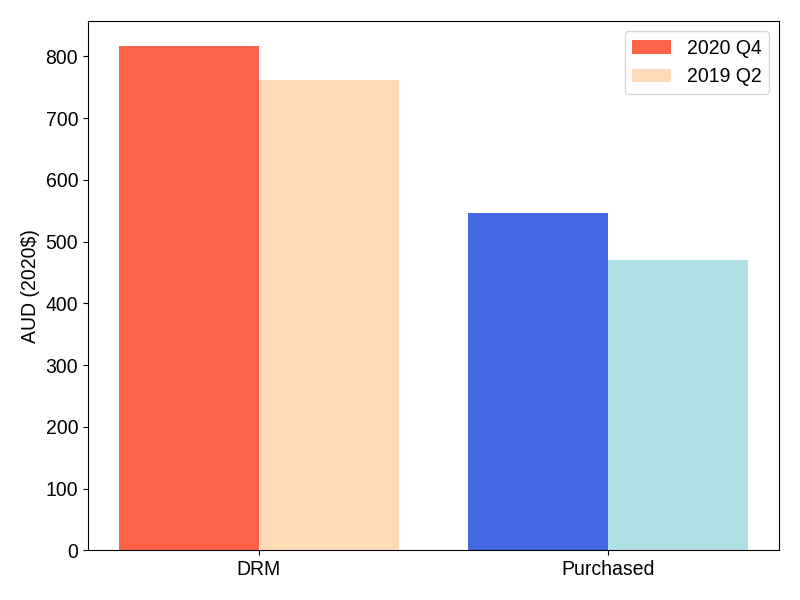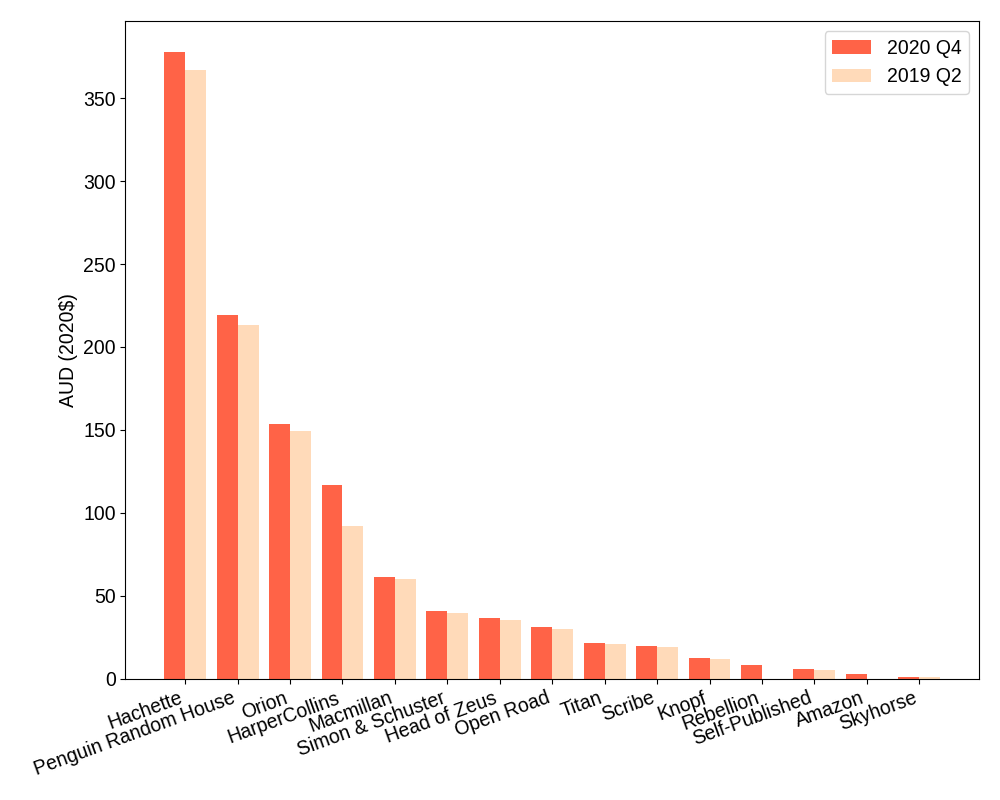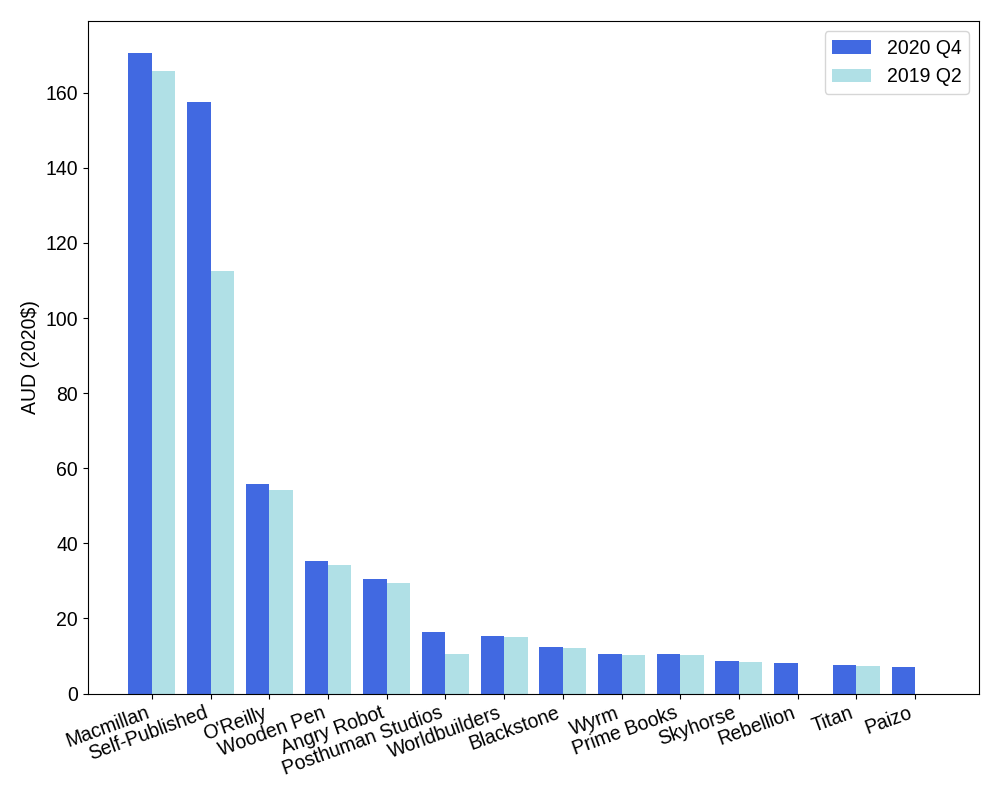DRM Round-up: Q4 2020
Wow! It's been a while! Today is International Day Against DRM 2020, which means it's time to check in with my e-book collection for the first time since Q2 2019.
I have a policy of refusing to purchase any e-books encumbered with DRM, which I observe strictly. My frustration has grown so immense that I have begun cataloguing all the e-books that I would have bought if not for DRM.
These are the results of my analysis to date, showing just how much more money publishers could have wrangled out of me if only they were willing to sell me actual products and not bogus contractural lookalikes.
Figure 1. Spending to date on e-books, and potential spending prevented by DRM

Note 1: Figures adjusted for assumed average inflation rate of 2%p.a. and reported in Australian dollars at today's prices
Note 2: Purchased e-books include DRM-free e-books purchased in both Australian markets, and in US markets (despite georestrictions) where available DRM-free in the US but not Australia
To date, publishers could have increased their sales revenue from me by 149% by offering DRM-free copies of e-books. This figure has fallen slightly from Q2 2019 (160%), not because of publishers actually offering more DRM-free e-books, but because of a large increases in purchases from DRM-free publishers!
Figure 2. Potential spending prevented by DRM by publisher to date

Note: DRM-encumbered e-books published by different publishers in Australia and the US are counted towards both publishers (as either being DRM-free would result in a purchase), so figures do not sum to those in Figure 1
Figure 3. Spending on e-books by publisher to date

The big winner this year was self-published books, with purchases increasing by a full 40%! This was driven to a large extent by books sold directly on Amazon and Smashwords.